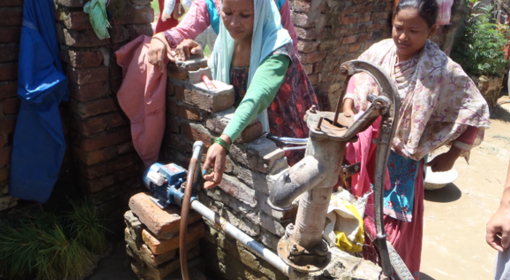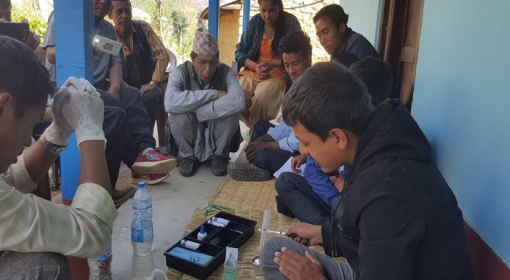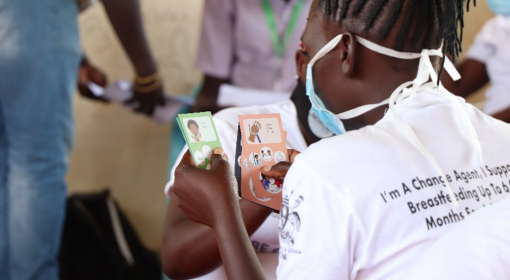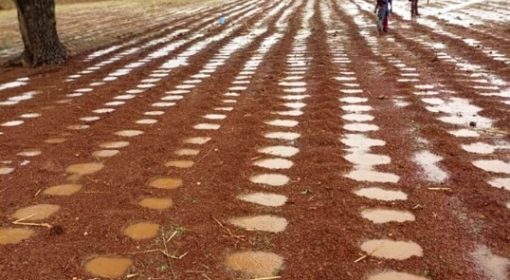The WASH Alliance International value proposition for tools supporting sustainable water systems’ maintenance in rural settings
by Aldo Zamarroni Peralta and Judith de Bruijne
Practica Foundation
Under the flag of the WASH Alliance International, Practica Foundation has started a limited 2-weekly blog series on Asset Management of small-scale water systems. Our third post presents the digital tools under development. The experiences of the director of SmartTech (a Nepali software development company) are being shared. He explains the user-centred design process.

In previous posts, it was discussed why Asset Management (AM) represented an opportunity for improving the technical and financial operation of water systems in the Global South. However, experiences have taught us that simply proposing ‘tools’ as a solution for sustainable water management is not the answer. Since the 1980s, AM tools have been available as complex software packages with huge data requirements. As a start point to simplify the implementation of AM, Practica Foundation built an Excel-based tool. However, it became clear that an Excel tool might not be user-friendly and can easily become too complicated and time consuming to be effectively used by local water operators and user committees.
The value proposition from the WASH Alliance International approach
The WASH Alliance International under the WASH SDG programme is developing a set of open-source tools based on iterative and human-centred design processes. The development of the tools is led by SmartTech a software company based in Nepal. To ensure that all users’ needs are considered, plenty of time has been invested in actively engaging local stakeholders. This group consist of water user committees, men and women, entrepreneurs and regulating bodies such as (local) governments. The stakeholders are engaged in the design, prototyping, and field testing.
‘What triggered me the most, is the high level of collaboration that the stakeholders have achieved, supported by the WASH Alliance International’. – Serish Dhital, Project Lead at Smart Tech.
He further adds, ‘the design team should spend enough time understanding who the users are, what their specific needs are, what their priorities and constraints are. In the end, this will result in the development of a tool that is easy to understand, and that people really want to use because it makes their lives easier and has clear benefits such as timesaving and cost-effectiveness.
Asset Management ‘tools’
1. E-learning tool
To guide the asset management application, it is important that everyone involved has a clear understanding of the concept of asset management. Therefore, a capacity building component has been integrated in the introduction of asset management toolbox. The e-learning is a
user-friendly interactive tool that makes use of Moodle (an open-source platform). The learning process has been separated into 3 different modules, each of them aiming at different target groups. The first one aims for the water user committee members (WUC), representatives from the government of villages or towns. Here the e-learning tool deals with the basics and why of implementing Asset Management in rural and peri-urban water systems.
The second target group includes the water systems’ caretakers and NGO field-level staff. Here, the addressed topics are more technical and practical oriented, including the implementation and monitoring of an asset management plan in a real-life setting. The third module aims at professionals from government, NGOs and private companies. Here, the main focus is to translate the knowledge that has been acquired in the first two modules into a solid AM strategy and plan. Including a section to analyze different costing and tariff scenarios.
2. Android app
The app is in the process of development. Based on the identified needs the app is expected to include:
- A digital cashbook with the income and expenditures per month.
- Maintenance activities per asset divided in three categories: preventive, inspective and reactive. With the possibility to include maintenance logs.
- Service monitoring to check the provided service level in terms of water quantity and quality.
3. Dashboard
The web-based dashboard allows to monitor maintenance, finance and to plan service activities for the systems’ assets. The envisioned functionalities include:
- Financial data visualization: Includes the current and expected annual income and expenditure, and a Cashbook with monetary flows.
- Maintenance: Includes a detailed cost visualization of operation and maintenance costs, with a split up in material-, replacement-, labour costs. And a risk assessment for the systems’ assets.
- Service level monitoring: Includes the volumes of water supplied per month, and the water quality. And the possibility to check whether this is in line with volume of water sold, so non-revenue water can be accounted for.
In the next and last post of this blog series the road map for implementation, sharing, promotion, and scaling of the tools will be presented.
Special thanks go to Serish Dhital, project lead at SmartTech. This document was developed by Practica Foundation as a member of the WASH Alliance International, partner of the WASH SDG Consortium.
For more information please contact: info@practica.org; or visit www.practica.org




